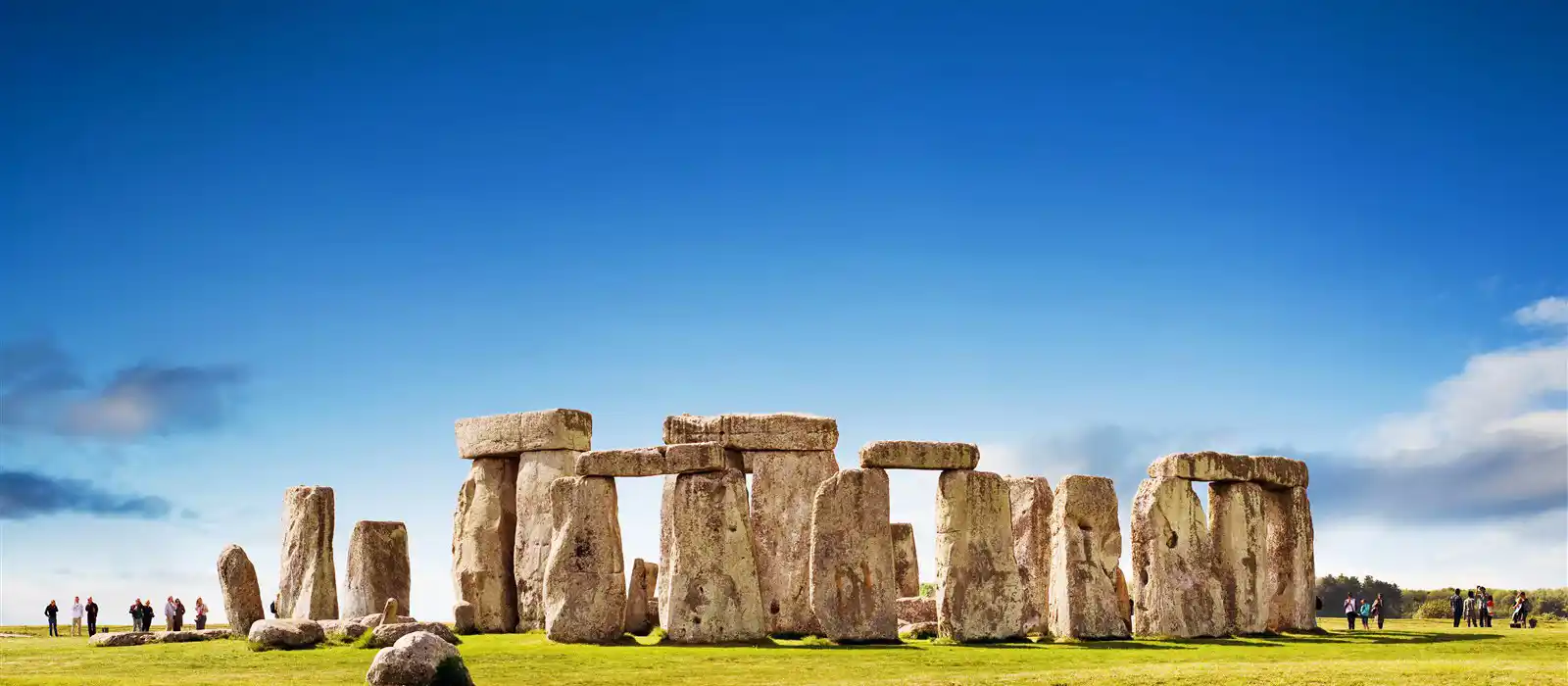The prehistoric monument of Stonehenge in Wiltshire has puzzled researchers, archaeologists and visitors alike. Although Stonehenge is one of the most famous sites in the world, a few fundamental questions regarding the ring of massive standing stones are still shrouded in mystery. Archaeologists are just beginning to separate the facts from fiction through a maze of theories and myths surrounding the World Heritage Site. For those of you planning a trip to the south, this famous stone circle is a must-see spot due to its historical and cultural importance. Read on to learn some Stonehenge facts to spark your interest and enhance your visit.
Rings
Stonehenge is undoubtedly the most famous stone circle in Britain and perhaps the world. However, there are over 900 stone rings across the British Isles which can be visited today. Nearby Stonehenge is an impressive site at Avebury with another set of standing stones as well as other ritual spots in West Kennet, Long Barrow and Windmill Hill.
The Site
The Stonehenge site is roughly 100 feet in diameter and 24 feet tall. Located between two rivers in Wiltshire in southern England, the burial ground which surrounds the stones stretches across 12 square miles. The site is now maintained by English Heritage and is open everyday of the year. Admission costs £8 for adults and £4.80 for children aged 5 to 16, while a family ticket costs £20.80.
Age
Scientists have used radiocarbon dating to try to accurately assess the age of Stonehenge. Using this technique, many have traced its roots back to the beginning of 3100 B.C., 300 years before the Egyptians built the first set of pyramids.
Builders
The first academic who tried to understand Stonehenge was John Aubrey in 1640. He declared that the ring was the work of Druids. This statement was supported by others who claimed that the placement of the stones had an astronomical role. While these early attempts to identify the builders of the site have now been debunked, there are still very few real theories to explain the stones. Whoever was responsible for Stonehenge is now believed to have a deep knowledge of astronomy and geometry as the formation marks the alignment of the moon and sun alongside certain weather periods throughout the year. Scientists think that more than a million hours of labour was needed to complete the construction.
Folklore
Before science began to explain the myths behind Stonehenge, many early historians were heavily influenced by folklore. One of the earliest legends stated that Merlin had a giant build the huge structure for him or that he magically transported the stones from Ireland. Others believed that Stonehenge acted as a portal for Druids to cross into a different dimension or that the ring is actually a message from an alien civilisation which we have yet to decode.
Healing Site
Over the years, many scientists have speculated that the stones held spiritual and religious significance for early civilisations. One such theory was stated in 2008 by Geoffrey Wainwright and Timothy Darvill. They claimed that the site may have been a healing and pilgrimage site due to the nearby burial grounds in the area. According to this theory, the stones may have welcomed the sick and injured like a primeval comparison of Lourdes in France.
Summer Solstice
Thousands descend upon this stone circle in Wiltshire each year to celebrate one of its most popular annual events, the Summer solstice. In 2013, more than 20,000 revellers joined together to greet the longest day of the year on June 21st. The event is recognised as a pagan ritual, one which focuses on the spirituality of nature. However, the summer solstice and the sun hold special significance for many religions. While some Pagans believe the solstice marks the marriage of the God and Goddess to create bountiful harvest fruits, the Celts celebrate the event with large bonfires to add to the sun’s radiance.
While Britain is home to many beautiful World Heritage Sites and areas of historical significance, Stonehenge is one of the most mystical must-see locations. With so many conflicting ideas over the origins of this stone circle, the magic behind this puzzling site is still waiting to be discovered. A trip to Stonehenge and surrounding ancient sites in Wiltshire is made easy for campers thanks to a large number of campsites around Salisbury, Alderbury and Shrewton.
You'll find booking a campsite by Stonehenge from our listings a breeze.
Download our list of everything of you need to remember for the perfect camping trip!
DownloadIn the UK, you don't have to travel far to see some amazing sights.
We're lucky enough to have world-besting landscapes, history and wildlife right on our doorstep.
Where will you explore next?
Explore Destinations


